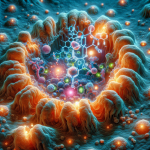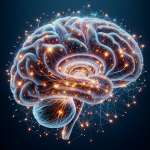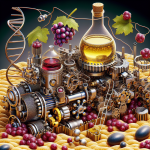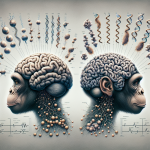May 29, 2025
No Comments
Introduction
We live in a world illuminated not just by the bright lights we can visually perceive, but also by emissions that our naked eye fails to capture. One such intriguing phenomenon is the Ultraweak Photo Emission (UPE). This invisible radiance, witnessable only through sensitive equipment, holds an immense potential for scientific and technological advancements, which we will explore in this blog with an easily comprehensible approach.
Understanding the Basics
Definition and Principles
At the most fundamental level, Ultraweak Photo Emission involves the emission of extremely low-intensity light, which is not visible to the human eye, from biochemical and biological systems. This occurs as a result of various physicochemical processes, particularly those involving molecular excitation and de-excitation. The emitted light, also known as biophotons, comprises an array of wavelengths or frequencies, spanning virtually the entire spectrum, from ultraviolet to near-infrared.
History of UPE
The concept and exploration of UPE trace back to over a century ago, with the first observation dating as far back as the early 20th century. However, it remained in relative obscurity until more recently, due to limited technology and understanding. The study of UPE witnessed a significant turning point with advancements in photodetector technology, especially in the late 20th and early 21st century. From something that was considered an anomaly in the world of science, UPE has now become a subject of intense research and fascination.
The Mechanism of Ultraweak Photo Emission
The UPE Process
Ultraweak photo emissions take place as a result of the processes occurring at the molecular level within cells. When a molecule becomes excited due to biochemical reactions, it reaches a higher energy state. This state is unstable for the molecule, and it seeks to return to its stable state of lower energy. During this return, the excess energy is thrown off as a photon, leading to the occurrence of UPE. Essentially, what we’re witnessing in UPE is the discharge of the “excitement” in the form of light!
Steps Involved in UPE
Think of UPE as a three-step event:
- Initiation of the process due to molecular excitement.
- Release of energy, in the form of photons, as molecules return to their ground state.
- Detection of these ultraweak emissions through specialized instruments.
In stark contrast to the photons emanated by a light bulb, the photons released during UPE offer unique, biologically relevant information.
Factors Influencing UPE
Multiple factors influence the process and intensity of UPE. The most prominent among these include the type of organism or biological system, the specific location within the organism, the metabolic state of the organism, and the presence of stressors, including diseases and environmental factors. The interplay of these factors dictates the character and degree of the UPE.
Though this science of light seems complex, it is the comprehension of these intricate details that gives us the capabilities to harness UPE and bring about breakthroughs in various fields of study. As we delve deeper into the current reports and researches on UPE, we shall find how this seemingly weak phenomenon is making robust impacts in the scientific world.
The Latest in Ultraweak Photo Emission
Recent Developments
The field of Ultraweak Photo Emission is evolving rapidly with each passing day. Unraveling UPE’s secrets has not only broadened our understanding of the complex biochemical processes but also paved the way for novel technologies and applications. As researchers continue to explore these weak light emissions, specific advancements have begun to stand out, altering the perception and utility of UPE.
Pioneering researchers in the field have engineered cutting-edge photon detection technologies that can capture these weak emissions with a higher precision than ever before, thereby enabling more accurate interpretation of the data. Furthermore, sophisticated techniques like high-sensitivity CCD imaging are being employed to capture the spatial and temporal distribution of biophotons.
Additionally, novel analytic methods, including refined mathematical and computational models, offer new ways to interpret UPE data, opening doors to fascinating applications across various fields.
Implications and Applications
The progress in UPE technology is not an end in itself but a means to several exciting ends. Scientists speculate that a better understanding of UPE could potentially unlock new diagnostic and therapeutic tools in medicine. The phenomenon’s potential connection to cellular and systemic stress implies that it could serve as a novel and non-invasive indicator of disease states and physiological imbalances.
Environmental science is another field that could benefit vastly from developments in UPE. Detecting changes in emissions could provide pivotal clues about an ecosystem’s health and help scientists monitor and predict environmental changes more accurately.
In the broader picture, advancements in UPE are also anticipated to contribute significantly to the development of new light sources, sensors, and energy-conversion technologies, thus impacting sectors well beyond healthcare and environmental science.
Importance and Impact
Evolutions and Upgrades
With an enriched understanding of UPE, science has pushed the boundaries of what was once the fringe into the mainstream. The intricate dance of ultraweak photon emissions within biological systems promise a transformative change in many scientific and technological fields.
Living organisms could act as light sources emitting signals that intimate us not only about their health and wellbeing, but also about surrounding environmental conditions. This reality seemed a distant dreamscape just a few decades ago but is fast turning into palpable reality, thanks to the latest strides in UPE research.
Impact on Various Industries
The implications of UPE research are far-reaching, and its potential impact covers a gamut of sectors. This is because UPE, at its core, deals with understanding life and its processes better. This knowledge could be the key to unlocking solutions to some of the most critical issues facing humanity today – from diagnosing diseases sooner to decoding environmental stress signals.
Bright Future of UPE
With continuous advancements in technology and a deeper understanding of biology, the future of Ultraweak Photo Emission appears brighter than ever. The promise it holds is significant and opens up countless possibilities for further exploration and discovery. Whether it’s enhancing our understanding of biological processes, early detection of diseases, or environmental monitoring, UPE is on course to revolutionize various domains of human life.
Conclusion
Ultraweak Photo Emission, although a relatively new entrant in the research realm, is a testament to the incredible world of unseen science that surrounds us. The seemingly infinitesimal emissions bear the power to answer some of humanity’s pressing questions and open fresh avenues never thought possible earlier. As we stand at the cusp of this exciting journey, it remains thrilling to anticipate the next chapters in the fascinating saga of UPE unfold.









